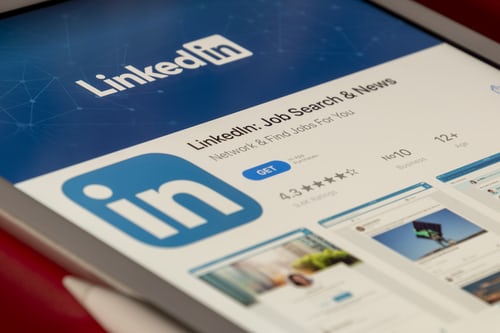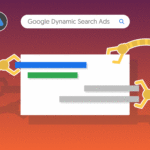As we leave a year like no other behind us and transition into 2021, the goal for paid search advertisers remains the same: to reach the right audience at the right time and turn that click into a lead or sale. One of the best ways to do that is to start integrating the unique LinkedIn targeting audiences that Microsoft Advertising offers.

These advanced ways to collect data and target customers allow you to dive deeper into the company, industry, and even job title of the person clicking on your ads.
So that’s what I’ll be focusing on in this post. We’ll talk about: In this post, I’ll cover:
- The different types of LinkedIn audiences and what they entail.
- How to set them up for targeting in Microsoft Ads.
- How to optimize your ads once you’ve collected data.
I’ll also provide some real-life examples and data from my own experiences in PPC consulting. LinkedIn targeting will be one of your most important strategies moving forward and you will continue to see Microsoft Ads deliver you even greater performance.
LinkedIn audience types
Before I get into setting up your audiences for Microsoft Ads, let’s go over the three different LinkedIn audience types you can target.
1. Company
- Target users in specific companies.
- Good for if you have a list of prospect names or high-converting organizations
- Use to collect data and adjust.
With this first audience, advertisers can select from thousands of different companies. Operating off a search function, you’re able to type in a prospective client or business name and then add them into your data observation strategy.
The most important thing to note about this company audience, as well as the others, is that they are operating entirely under the assumption that people have their LinkedIn profiles up to date. So, for the company audience, Microsoft Ads would look for people who worked most recently at the companies you select and have that set under their LinkedIn profile. This particular audience type can be helpful if you have a list of prospective client names or if you know that your customers will likely come from whatever organization(s) you select.

If you’re not 100% sure what companies you need to target, it can also just be a great way to start collecting data and observing the click traffic for a time before you make any adjustments.
My advice would be to start with businesses that you currently have on your prospect list, businesses in the target work sector you’re gearing your ads towards, or purely to collect data to utilize in the future.
2. Industry
- Target people in highly specific industries
- Can help collect the most valuable clicks
- Start with higher-level industries
Our second LinkedIn audience comes in the form of industry data. The industries you can select from are in the form of a pre-set list that Microsoft has in the campaign settings, but they can get extremely specific depending on how deep you dig into them.
I’ve personally found the industry audiences to be some of the most helpful for advertisers to take advantage of because knowing your target audience and industry is at the foundation of not just PPC marketing, but your entire marketing strategy as a whole.
For example, I work with an ecommerce client who sells school & office supplies. They understand that one of their biggest target audiences is the education sector. Through the industry audience section, we were able to first observe the Higher Education, Research, eLearning, Education Management, and Primary/Secondary Education audiences they offer and then optimize with bid adjustments after we recognized which was driving the most value and best return.
With a wide array of different industries to select from that include Energy & Mining all the way to Wellness & Fitness, these audiences can really help drill down into the most valuable clicks out there on the Microsoft search network.
With industry audiences, I would recommend first identifying which higher-level industries will be your targets and then dive deeper into the more specific sub-categories under those to make your first selections.
3. Job function
- Target users of specific roles within their organization.
- Helpful if you know who the decision-makers are in your target market.
- Start with a broad range of roles, then refine accordingly.
The final type of audience that we can utilize is the job function. Bing describes this audience as a way to target people who perform certain job functions as defined by their LinkedIn profile. This particular audience is extremely helpful if you know what roles the decision-makers at your target companies tend to have.
For example, if when signing on a new customer, you tend to work with people in their finance department, then finance, accounting, and purchasing may be the more ideal audiences for you to select. Or let’s say you tend to work with customers that are more regularly in administrative-type roles. In that case, the administrative, human resources, and operations audiences would be the perfect ones for you.

At the end of the day, because you are solely collecting data in the beginning, I would recommend selecting as many as you feel are relevant and then optimizing once you have a solid one to two months’ worth of information to go off of. This could also be a great way for you to dive deeper into the demographic make-up of your ideal customer and collect data for job function audiences you may have not thought would normally be relevant.
On consulting calls, I generally advise people to use any combination of the following: program/project management, purchasing, operations, administrative, human resources, marketing, sales, and finance. Of course, if you identify any others that are even more entrenched in your specific industry, then be sure to add them in. It really is the more the merrier type of situation when adding these audiences because it will only allow you to collect and utilize more data and continue to get the best results from your Microsoft ads.
When starting out, I generally advise people to target any combination of the following: program/project management, purchasing, operations, administrative, human resources, marketing, sales, and finance.
How to set up LinkedIn audiences in Microsoft Ads
In this next section, I’m going to cover how to set up the LinkedIn audiences in your Microsoft Ads account (on both the campaign and ad group level). There are also several specific rules when setting up the audiences that I will cover to make the process for you as easy as possible, but let’s first start with the steps:
- Log into your Microsoft Ads account
- Click on the first campaign you’re adding LinkedIn audiences to
- Click into the campaign’s settings
- Scroll down to the Campaign targets section
- Click Edit target categories and then select the ones you want to use (any combo of Company, Industry, or Job Function)
- Scroll down to the very bottom of the Settings page
- Under each category click Edit target and select from the different options available in each
- Once you’ve selected them all click Done
- After you’ve finished each category you’re going to use, click Save
- Once saved, scroll back down into the settings to the new category sections and manually change all bid adjustments to 0%.
Selecting Your Audiences
We’ll first go through the basic steps, and then I’ll provide some best practices and important considerations.
Select your campaign and level of application
When you first log into your account, the first thing you will need to decide is which campaign(s) you would like to start using them in and whether you want to add them on the campaign level or more granularly at the ad group level.
Unless you do have very specific ad groups set up that you anticipate would be more ideal to have set on that level, my suggestion would be just to add it at the campaign level. This will allow you to collect data much quicker and will also prevent you from running into any issues using these down the line.
You can only select one level: campaign or ad group. My suggestion would be to go with campaign level. This will allow you to collect data quicker and also prevent you from running into any issues down the line.
The one specific rule you need to be careful of is that you can only select one level: campaign or ad group. If you try to add audiences to the campaign level and then also to the ad group level, it will block you. In the reverse scenario, if you set some up for specific ad groups and then try to for the entire campaign, you will receive an error message. Campaign level allows you to collect information on a much bigger scale.
Select your campaign targets
Next, after you’ve selected your first campaign to add them to, you’ll want to click into the campaign’s settings. Once in the settings, you’ll want to scroll down to the section titled ‘Campaign targets’ and this is where you will select which of the three you’d like to use.

Select your categories
Under campaign targets, you will then click “edit target categories.” You have the ability to utilize any combination of the three, but the two I see used more often are usually Industry and Job Function. I would suggest using as many as you feel are relevant to your business.
After you select your audience types, you’ll scroll down all the way to the bottom of the settings screen and will see the categories you’re going to use. Next to each, there will be a blue font button ‘Edit target’ that will then allow you to go in and select from the different options.
Notes on selecting your audiences
A few important notes on selecting your audiences:
- The process for adding the three different types of audiences is exactly the same. You’ll click “edit target,” scroll through and select the ones you want to use, and then hit the ‘Done’ blue button when finished.
- One other important thing to also look out for is that when you click Done after selecting your audiences, you’ll need to hit the big blue ‘Save’ button.Unfortunately, if you don’t hit that final Save button and click away from the Settings screen, you will lose all your selected audiences and will have to repeat the process.
- The final change to also be aware of is that once your audience categories are selected and you’ve successfully Saved them, there will automatically be a +15% bid adjustment applied to them. In the final section, we’ll discuss optimizing these audiences with bid adjustments, but for now, I would manually change that back to 0% so that it does not increase our bids just yet.

Optimizing your audiences with bid adjustments
Once you’ve set up your campaign with the selected audience, here’s what you can do to access its important data and apply it to further improve performance.
Allow time for data collection
Now that you have your LinkedIn audiences selected and collecting data, the next step is to wait and give it time. Generally, with optimizing audiences, I would say that waiting at least two to four weeks minimum is important, but there are other factors that could affect that timeline.
Waiting at least two to four weeks minimum is important, so you can really see which audiences are driving the most value.
If you usually get a high number of clicks in that particular campaign, then you may be able to analyze the data even sooner. I use four weeks as a rule of thumb because after a month, you can really see which ones are driving the most value. Of course, as you move forward advertising and using these audiences, more data makes it easier to make changes.
Access and organize your data
Ok, you have your first month of data collected—now what? To access the data, you’ll first want to click into the campaign using the audiences and then click on the Demographics tab. You’ll notice that at the top of the page, it will have all the different demographic types listed out and you will then select whichever one you want to view first.
You may only see a few columns in regards to the type of data (clicks, impressions, etc.) so my suggestion would be to modify your columns and make sure you have all of the most important metrics selected, such as clicks, impressions, cost, CPC, conversions, CPA, and any other conversion-related ones that are relevant.
Modify your columns and make sure you have all of the most important metrics selected, such as clicks, impressions, cost, CPC,

In the industry section, for example, you’ll see each of the different industries you selected and the data they’ve collected. This optimization may vary depending on what metrics you hold to be most valuable and what your business’s goals are, but most likely you’ll want to use conversions, CPA, and conversion rate as your main three. You’re going to be looking to see:
- Which industry drives the most conversions
- Which has the lowest CPA, and
- Which converts at the highest rate
Add bid adjustments
Your next move will be to add bid adjustments to the audiences performing the best, based on those three metrics. By adding in a bid adjustment, you’re targeting your ads more towards those audiences in the hopes to drive more traffic and more value from them.
On the flip side, if you notice there are certain audiences performing poorly and not converting well, then you can also decrease your bid adjustment. This lessens the likelihood that your ads show to people in those audiences. As more time goes by and your data continues to grow, you can continue to add adjustments where you see fit and really drive the most value from your LinkedIn audiences and Microsoft Ads as possible.
Drive high-value traffic with LinkedIn audience targeting
Identifying business leads and opportunities can almost feel like a needle in a haystack situation. With the need to drive as much value from the traffic you’re getting, you must take advantage of all tools available, and now you know how to use one of the best ones out there: LinkedIn audiences! Some key things to remember are:
- The targeting technology is operating entirely under the assumption that people have their LinkedIn profiles up to date.
- Always start broad with targeting options and then refine as you collect data.
- Give plenty of time for your campaigns to give enough data to make meaningful decisions.




Leave A Reply